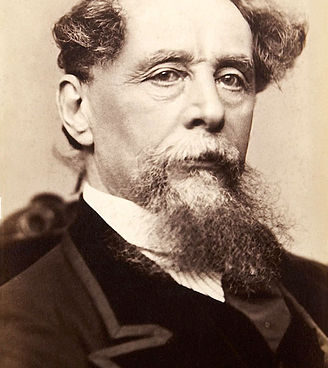Bipolar And Schizoaffective Disorder

“It was one of those March days when the sun shines hot and the wind blows cold: when it is summer in the light, and winter in the shade.” – Charles Dickens.
Case study # 4
Past psychiatric history
Alex began to have difficulty at approximately age 16 years, after his 76 years father died. He became increasingly withdrawn, talking little to the family and withdrawing from friends. He lost interest in school and other activities and seemed to “go into his own little world” according to his mother. He spent most of the time by himself, remaining in his room watching TV or playing games. His mother reported that he seemed content to be by himself and she did not clearly see him as depressed. At times he complained of hearing the voice of his deceased father talking to him. He also thought that people on the street were talking behind his back.
The patient presented with the subacute onset of predominantly negative symptoms along with some positive symptoms. The negative symptoms include social and academic withdrawal, loss of interest, and low motivation. The early positive symptoms included auditory hallucinations along with ideas of reference and thinking that people were talking behind his back.
Her mother thought that he would grow out of his problems and hence did not seek psychiatric assistance. However at the age of 17, his grades declined further and he refused to go to school after he became convinced that many people were spying on him. He eventually returned to school and completed his high school but he remained socially isolated and paranoid.
The history is typical of a schizophrenic process.
Over the next years were reported periods of elevated mood. These included overspending money; inappropriate social behaviours, such as phoning friends at early hours of the morning and getting himself into embarrassing situations. This included dancing around in public. He also described staying awake for up to 72 hours due to constant thoughts running through his mind, and works very effectively on his website during this time. These elevated moods can last up to 10 days in duration. In between the high and low moods, he describes feelings of intense anger, when he can attempt to be physically violent towards his mother.
By the age of 24, Alex presented with a classic mania episode.
A diagnosis of schizoaffective disorder was made.
The Difference Between Bipolar Disorder and Schizo-Affective Disorder ?
Bipolar disorder affects a person’s ability to regulate moods. Bipolar disorder is a mood disorder only and not a psychotic disorder because everything involved with bipolar disorder must be attached to a mood. To put it simply- people with bipolar disorder have psychotic symptoms at the same time as mania or depression. In pure bipolar disorder you can be ‘depressed and psychotic’ or ‘manic and psychotic.’ Psychotic dysphoric mania means you are depressed, manic and psychotic at the same time.There is never a situation in bipolar disorder where you are only psychotic. (Please note that although psychosis is common in bipolar disorder, not everyone has psychotic symptoms.)
If you have bipolar disorder, but you have psychosis when you are NOT manic or depressed, this is the criterion for schizo-affective disorder.
Bipolar disorder is strictly a mood disorder, while schizoaffective disorder is a mood disorder combined with separate psychotic symptoms that are not attached to mania or depression.
Bipolar disorder is a mood disorder that includes mania and depression. People with bipolar disorder can have psychotic symptoms, but they are always attached to a mania or a depression. If people with bipolar disorder have psychosis that is separate from mania and depression, they have schizo-affective disorder.
What is a psychotic disorder (psychosis) ?
Psychosis is a break with reality that includes hallucinations and delusions. A hallucination involves the senses and means you see, hear, smell, taste or physically feel something that isn’t there. Seeing animal shapes run around chairs or hearing your name called in a store are examples of hallucinations.Delusions are false beliefs. Paranoia is a delusion. Thinking there is a camera in the corner of a room recording your every movement is a delusion. Believing that the cops are surveilling your house and sending the information back to the president is a delusion. Delusions are hard to deal with because they feel so real! When a person has hallucinations and delusions, but doesn’t have mood changes, it’s called a psychotic disorder.
What is schizophrenia?
Schizophrenia, a psychotic disorder is a complicated illness that is much more than psychosis. Social skill impairment, serious thought disorder symptoms, self care challenges, focus problems and other symptoms that are called the positive (talking to yourself in public for example) and negative (catatonic/frozen body for example) are not necessarily present when a person has schizo affective disorder.
In fact, if a person has bipolar disorder and the traditional symptoms of schizophrenia, it’s actually two diagnoses.
It’s important to note that although people with schizophrenia can have depression, they NEVER have mania. Mania is strictly a bipolar disorder (or schizo affective disorder) symptom.
I would not dare to say that there is a direct relation between mathematics and madness, but there is no doubt that great mathematicians suffer from maniacal characteristics, delirium, and symptoms of schizophrenia. – John Forbes Nash, Jr.